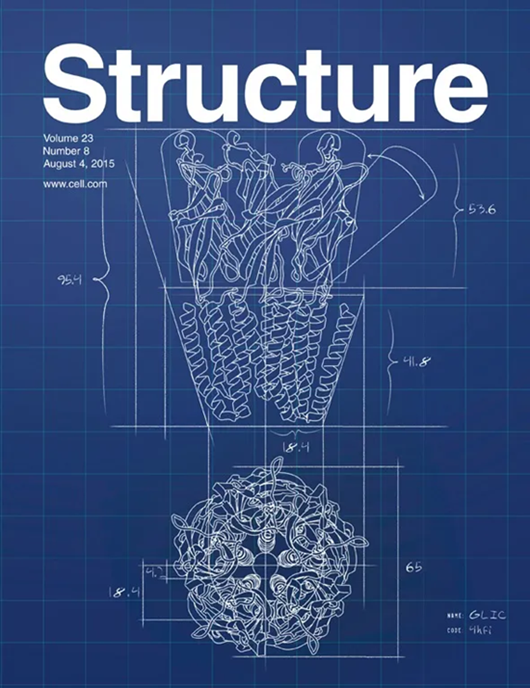Structural insights into the assembly and regulation of 2′-O RNA methylation by SARS-CoV-2 nsp16/nsp10
IF 4.4
2区 生物学
Q2 BIOCHEMISTRY & MOLECULAR BIOLOGY
引用次数: 0
Abstract
2′-O-ribose methylation of the first transcribed base (adenine or A1 in SARS-CoV-2) of viral RNA mimics host RNAs and subverts the innate immune response. How nsp16, with partner nsp10, assembles on the 5′-end of SARS-CoV-2 mRNA to methylate A1 is not fully understood. We present a ∼2.4 Å crystal structure of the heterotetrameric complex formed by the cooperative assembly of two nsp16/nsp10 heterodimers with one 10-mer Cap-1 RNA (product) bound to each. An aromatic zipper-like motif in nsp16 and the N-terminal regions of nsp10 and nsp16 orchestrate oligomeric assembly for efficient methylation. The front catalytic pocket of nsp16 stabilizes the upstream portion of the RNA while downstream RNA remains unresolved, likely due to flexibility. An inverted nsp16 dimer extends the positively charged surface for longer RNA to influence catalysis. Additionally, a non-specific nucleotide-binding pocket on the backside of nsp16 plays a critical role in catalysis, contributing to enzymatic activity.

病毒 RNA 的第一个转录碱基(腺嘌呤或 SARS-CoV-2 中的 A1)的 2′-O-核糖甲基化可模拟宿主 RNA 并破坏先天性免疫反应。目前还不完全清楚 nsp16 与伙伴 nsp10 如何在 SARS-CoV-2 mRNA 的 5′端组装以甲基化 A1。我们展示了两个 nsp16/nsp10 异源二聚体合作组装形成的异源四聚体复合物的 2.4 ~ Å 晶体结构,其中每个异源二聚体上都结合了一条 10 聚合体 Cap-1 RNA(产物)。nsp16 中的芳香族拉链状基序以及 nsp10 和 nsp16 的 N 端区域协调了寡聚体的组装,以实现高效甲基化。nsp16 的前端催化袋稳定了 RNA 的上游部分,而下游 RNA 可能因其灵活性而仍未稳定。一个倒置的 nsp16 二聚体为较长的 RNA 扩展了带正电荷的表面,从而影响催化作用。此外,nsp16 背面的一个非特异性核苷酸结合口袋在催化过程中起着关键作用,有助于提高酶活性。
本文章由计算机程序翻译,如有差异,请以英文原文为准。
求助全文
约1分钟内获得全文
求助全文
来源期刊

Structure
生物-生化与分子生物学
CiteScore
8.90
自引率
1.80%
发文量
155
审稿时长
3-8 weeks
期刊介绍:
Structure aims to publish papers of exceptional interest in the field of structural biology. The journal strives to be essential reading for structural biologists, as well as biologists and biochemists that are interested in macromolecular structure and function. Structure strongly encourages the submission of manuscripts that present structural and molecular insights into biological function and mechanism. Other reports that address fundamental questions in structural biology, such as structure-based examinations of protein evolution, folding, and/or design, will also be considered. We will consider the application of any method, experimental or computational, at high or low resolution, to conduct structural investigations, as long as the method is appropriate for the biological, functional, and mechanistic question(s) being addressed. Likewise, reports describing single-molecule analysis of biological mechanisms are welcome.
In general, the editors encourage submission of experimental structural studies that are enriched by an analysis of structure-activity relationships and will not consider studies that solely report structural information unless the structure or analysis is of exceptional and broad interest. Studies reporting only homology models, de novo models, or molecular dynamics simulations are also discouraged unless the models are informed by or validated by novel experimental data; rationalization of a large body of existing experimental evidence and making testable predictions based on a model or simulation is often not considered sufficient.
 求助内容:
求助内容: 应助结果提醒方式:
应助结果提醒方式:


